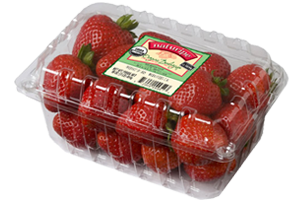I’ve been thinking a lot about packaging recently, as I’ve been writing something about Austin’s mostly packaging-free grocer, in.gredients. From a life-cycle assessment perspective, packaging is environmentally harmful. It’s just more stuff we’re using oil to create, often unnecessarily, that usually ends up in a landfill.
Yet, it’s not that simple. Â Smarter packaging could limit food waste. And when you look at the inputs that go into producing our food (especially proteins) and the emissions that come from our food system (especially livestock), I’m guessing there’s a beneficial tradeoff with packaging that prevents food waste.
 I say ‘guessing,’ because I haven’t seen a fabulous study comparing the impact of food waste with that of packaging (with an estimate on how much food waste is avoided through packaging). This EPA study looks at tomatoes, but it’s limited because no US retailers would provide tomato waste data (only Marks & Spencer, a UK retailer cooperated).
I say ‘guessing,’ because I haven’t seen a fabulous study comparing the impact of food waste with that of packaging (with an estimate on how much food waste is avoided through packaging). This EPA study looks at tomatoes, but it’s limited because no US retailers would provide tomato waste data (only Marks & Spencer, a UK retailer cooperated).
So how does packaging reduce food waste? Packaging protects delicate foods and keeps cut and prepared foods from exposure to oxygen (and the associated decomposing). And here are some related ideas from WRAP:
Suggestions included providing better information on keeping food ‘fresher for longer’, improving the recyclability of packaging and using campaigns such as ‘Love Food Hate Waste’ to encourage customers to reduce food waste.
Few people consider these benefits of food packaging.  Despite all the attention paid to food waste in the UK, most Britons are convinced that good packaging is an oxymoron.
At this point, I’m not entirely sure how to view packaging compared to food waste. (It is worth noting, though, that making packaging lighter can be a useful compromise.) Still, I’m pretty sure that packaging isn’t quite the environmental ill that some see it as. Â
One Comment